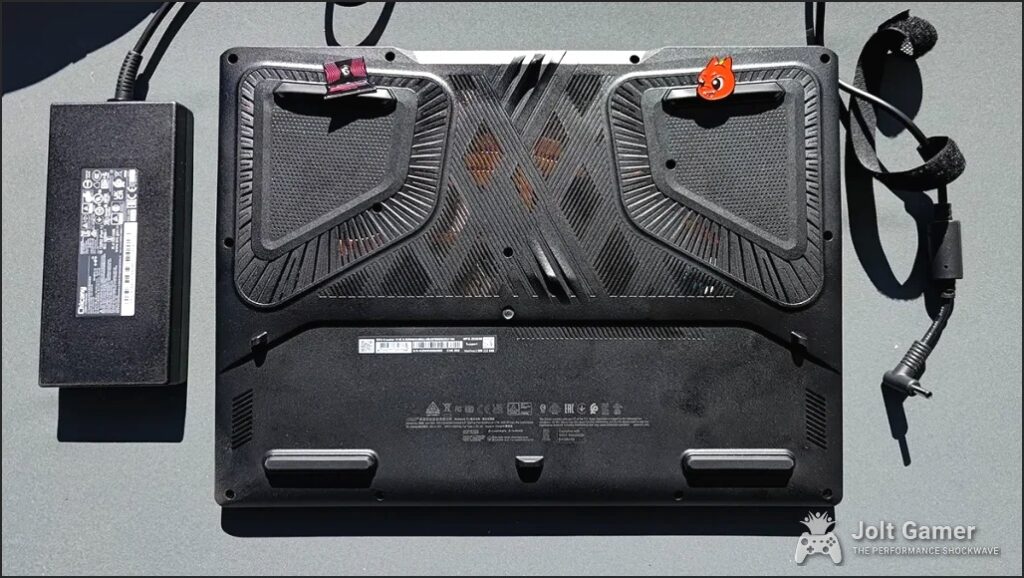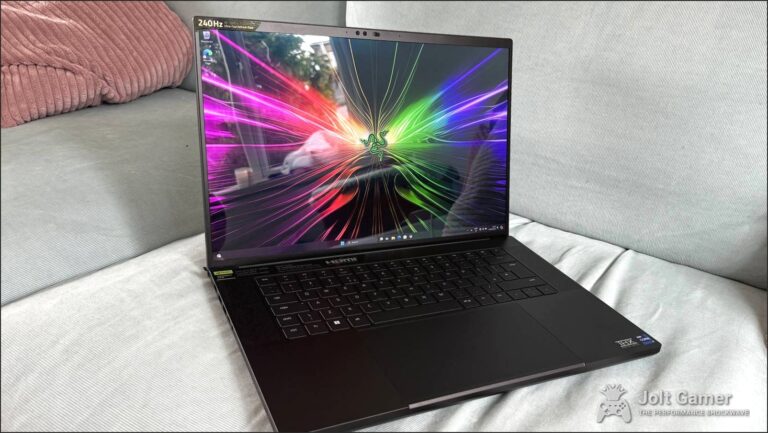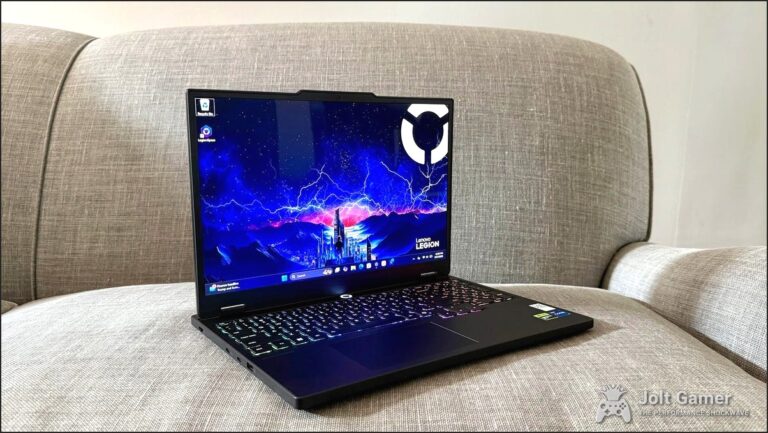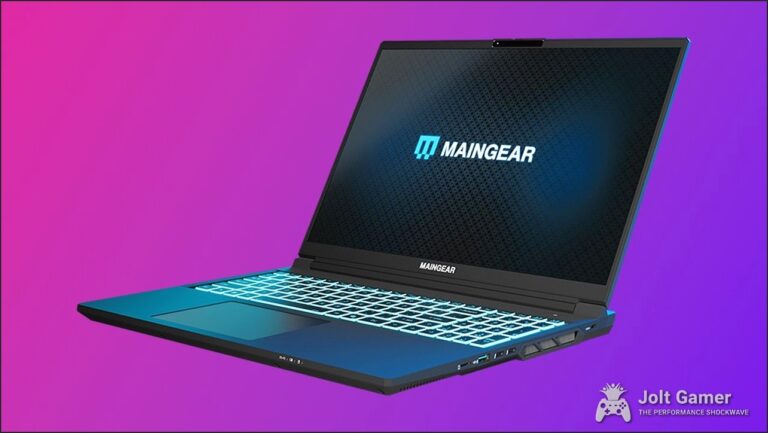MSI Crosshair 16 HX AI (2025) Review: Gaming & AI Prowess Under the Microscope
The gaming laptop landscape is constantly evolving, with AI integration now taking center stage. MSI’s Crosshair 16 HX AI (2025) enters this arena positioned as an upper mid-range powerhouse, promising a blend of cutting-edge Intel Arrow Lake processing, Nvidia’s latest RTX 5070 graphics, and dedicated AI capabilities. But in a market rife with competition and a community increasingly skeptical of the value proposition for high-end laptops, can MSI’s latest offering truly live up to its ‘Best Gaming Laptop’ and ‘Best Laptop’ accolades? We put the Crosshair 16 HX AI through its paces to deliver the definitive analysis, addressing the critical questions gamers and creators are asking.

Key Takeaways
- Exceptional CPU Performance: Intel Core Ultra 9 275HX delivers best-in-class rendering and general computing scores.
- Strong AI Capabilities: Integrated NPU and RTX 5070 Tensor Cores excel in AI workloads like image generation.
- Improved GPU Performance: RTX 5070 shows a noticeable generational leap over the RTX 4070, especially with Frame Generation.
- Robust Build & Cooling: Futuristic design, rock-solid chassis, and effective CoolerBoost 5 technology manage thermals well.
- Value & Gaming Trade-offs: While awarded ‘Best Laptop,’ its high price and ‘slower out of the box’ gaming at native resolution raise questions against dedicated gaming rivals.
- Battery Life Varies: Impressive battery with MUX switch for productivity, but significantly shorter for intensive use.
Futuristic Form Factor: Design, Display, and Build Quality
MSI has imbued the Crosshair 16 HX AI with an aesthetic that evokes futuristic spaceships and ray guns. The matte black lid, adorned with glossy, iridescent flourishes that catch a rainbow spectrum under light, gives it a distinct personality. Beyond aesthetics, the build quality is rock-solid: a very stiff lid with almost no flex, complemented by a sturdy, wobble-free hinge that allows the display to fold flat. Weighing in at 2.66KG (plus 742g for the power brick), it maintains a substantial yet manageable physical presence for a 16-inch gaming machine. The 16-inch matte IPS display boasts a 2560 x 1600 resolution and a 240Hz refresh rate, delivering a very sharp, bright, and colorful Windows Desktop experience. It generally offers very good contrast, revealing details in shadowy areas and approaching true blacks, with a very fast pixel response time for blur-free fast-moving objects. However, it’s important to note that it is not an HDR display and may lose some detail in blown-out highlights, exhibit light stepping in colorful transitions, and show slight noise in monochromatic equivalents. The 100% DCI-P3 color gamut coverage confirms its suitability for both gaming and color-critical work.


Pros
- Robust, rock-solid chassis and stiff lid with minimal flex.
- Sturdy, wobble-free hinge that folds flat.
- Sharp, bright, 240Hz QHD+ IPS display with fast pixel response.
- 100% DCI-P3 color gamut for vibrant visuals.
Cons
- Not an HDR display, can lose detail in highlights.
- Slight noise in monochromatic equivalents and light stepping in transitions.
- Translucent WASD keys become unreadable when RGB lighting is active.
- Glossy iridescent flourishes on lid may not appeal to all users.
Seamless Integration: Ports, Keyboard, and Audio
Connectivity on the Crosshair 16 HX AI is comprehensive, ensuring you’re well-equipped for various peripherals and external displays. It includes three USB-A 3.2 Gen 1 ports, a versatile Thunderbolt 4 port (with DisplayPort and PD 3 support), an HDMI 2.1 port (capable of 8K@60Hz or 4K@120Hz), a 3.5mm audio jack, and a Gigabit Ethernet LAN port for stable wired connections. Wireless capabilities are handled by Wi-Fi 6E and Bluetooth 5.3. Input is managed by a 24-zone RGB back-lit, semi-translucent ‘Scrabble-tile’ keyboard that includes a full number pad and unsquished arrow keys – a welcome feature for gamers. The trackpad is smooth and accurate, though its button actuation is noted as being a little loud and clicky. For communication, an HD 720p webcam with a physical shutter performs well in varying light conditions, complemented by a microphone array that captures clear audio even in noisy environments. Audio output comes from two 2-Watt speakers that produce a loud and well-rounded sound for general tasks, despite lacking significant sub-bass, with overall bass response being acceptable. A notable omission for security is the lack of Windows Hello facial recognition or fingerprint login.
- Ports: 1x Thunderbolt 4 (DP, PD 3), 3x USB-A 3.2 Gen 1, 1x HDMI 2.1, 1x Gigabit Ethernet, 1x 3.5mm audio jack.
- Wireless: Wi-Fi 6E, Bluetooth 5.3.
- Keyboard: 24-zone RGB, full numpad, unsquished arrow keys, translucent keys (can be unreadable with RGB).
- Trackpad: Smooth, accurate, but loud clicky actuation.
- Webcam/Mic: HD 720p with physical shutter, clear microphone array.
- Audio: 2x 2W speakers (loud, well-rounded, acceptable bass, lacks sub-bass).
MSI Crosshair 16 HX AI (2025): The Complete Spec Sheet
MSI Crosshair 16 HX AI (2025) Key Specifications
| Processor | Intel Core Ultra 9 275HX (Arrow Lake, 8 P-cores, 16 E-cores, NPU, 2.1-5.4GHz) |
|---|---|
| Graphics Card | NVIDIA GeForce RTX 5070 Laptop GPU (8GB GDDR7 VRAM, 115W TGP, 572 AI TOPS) |
| Memory | 32GB DDR5-5600 RAM (2x 16GB, expandable to 96GB DDR5-6400) |
| Storage | 2TB NVMe PCIe 4.0 SSD (1TB in some variants, additional PCIe 5.0 M.2 slot available) |
| Display | 16-inch QHD+ (2560 x 1600) IPS-Level, 240Hz Refresh Rate, 16:10 Aspect Ratio, 100% DCI-P3 (Typical) |
| Battery | 4-Cell, 90 Whr |
| Operating System | Windows 11 Home (FreeDOS in some regions) |
| Connectivity | Wi-Fi 6E (802.11ax), Bluetooth v5.3, Gigabit Ethernet LAN |
| Ports | 1x Thunderbolt 4 (DisplayPort, PD 3.0), 3x USB 3.2 Gen1 Type-A, 1x HDMI 2.1 (8K@60Hz / 4K@120Hz), 1x Mic-in/Headphone-out Combo Jack |
| Webcam | HD type (30fps@720p) with 3D Noise Reduction (3DNR) and physical shutter |
| Keyboard | 24-Zone RGB Gaming Keyboard with Copilot Key |
| Dimensions | 359 x 266.4 x 21.8-27.9 mm |
| Weight | 2.5 kg (5.5 lb) / 2.66 kg |
| Cooling | MSI CoolerBoost 5 (2 fans, 5 heat pipes, shared pipe design) |
| Security Features | Firmware Trusted Platform Module (fTPM) 2.0, Kensington Lock, physical webcam shutter |
Beyond Gaming: CPU Power & AI Acceleration
The heart of the Crosshair 16 HX AI’s computational prowess lies in Intel’s latest Core Ultra 9 275HX Arrow Lake processor. This CPU, with its eight Performance cores, 16 Efficient cores, and an integrated NPU, is designed for both raw processing power and dedicated AI tasks. Leveraging MSI’s OverBoost technology in ‘Extreme Performance’ mode, the laptop intelligently overclocks components and adapts cooling, delivering 55-Watts to the CPU and 115-Watts to the GPU simultaneously. In our benchmarks, the CPU performance was outstanding. It achieved a high PCMark 10 score of 8,367 (4.2/5 stars), outperforming all but super-premium gaming laptops. CPU rendering scores were truly exceptional, with Cinebench R15 hitting 5,295 (4.7/5 stars) and a best-ever Cinebench R23 score of 33,819 (5/5 stars), all while maintaining impressive thermal control. For creative and AI workloads, the UL Procyon Image Editing benchmark scored 8,778 (4.6/5 stars), and the NPU-utilizing UL Procyon AI Vision (CPU, Float32) scored 180 (5/5 stars), clearly highlighting its strong capabilities in photo editing and AI-driven tasks.
CPU & AI Workload Benchmarks (MSI Crosshair 16 HX AI)
Comparison notes: Cinebench R23 score is a best-ever for a laptop, outperforming many competitors.
AI & VRAM: Unpacking the Hype
The community has expressed significant curiosity and some confusion regarding how AI impacts VRAM usage. The MSI Crosshair 16 HX AI, with its Intel Core Ultra processor’s NPU and the RTX 5070’s fifth-generation Tensor Cores, handles AI tasks with dedicated hardware. While the NPU manages lighter AI workloads, heavier tasks like Stable Diffusion image generation leverage the GPU’s Tensor Cores, which can indeed increase VRAM utilization. This is where the RTX 5070’s 8GB GDDR7 VRAM becomes a crucial asset, providing ample memory for many current AI applications, though future, larger AI models may demand even more. This laptop demonstrates superior proficiency in Stable Diffusion compared to many in its class, validating the importance of sufficient VRAM for these emerging AI applications.
RTX 5070 Unleashed: Gaming Performance & Frame Generation
The Nvidia GeForce RTX 5070 GPU in the Crosshair 16 HX AI marks a significant generational leap, showing 10-12 fps quicker results in ray-tracing tests like Speed Way and Port Royal compared to previous-gen RTX 4070 laptops. In demanding 1440p benchmarks, it achieved average framerates such as 37.2fps in Speed Way (3.5/5 stars), 41.6fps in Port Royal (3.4/5 stars), and 106.6fps in Steel Nomad Light (3.7/5 stars). While it managed 39.8fps in Steel Nomad at 4K, its strength truly shines at Full HD with 794fps in Night Raid (4.8/5 stars). Real-world gaming in Call of Duty: Black Ops 6 saw averages of 166fps (1% Low 126fps) at native 1600p resolution, boosting to 211fps (1% Low 180fps) at Full HD minimum settings, thanks in part to Nvidia’s Frame Generation technology. It’s important to note that while capable, the laptop is generally ‘slower out of the box’ at its native 2560 x 1600 resolution for some demanding titles, performing optimally with upscaling enabled. For GPU-accelerated AI and video editing, the RTX 5070 scored 639 (3.4/5 stars) in UL Procyon AI Vision and 40,447 (3.7/5 stars) in video editing, encoding a demanding UHD H.265 60fps workload in a mere 51 seconds – significantly faster than an RTX 4070 laptop.
Gaming Performance Benchmarks (MSI Crosshair 16 HX AI)
Comparison notes: Frame Generation significantly boosts FPS, especially at 1080p. 3DMark Time Spy score indicates strong 1440p performance for an RTX 5070.
Endurance & Efficiency: Cooling, Battery, and On-the-Go Experience
MSI’s CoolerBoost 5 technology is central to the Crosshair 16 HX AI’s thermal management. Utilizing two fans and five heat pipes in a shared pipe design, it effectively cools both the Arrow Lake CPU and Nvidia GPU. Under general usage, the laptop operates silently. When pushed to ‘Maximum Performance’ mode, the fans produce a robust yet relatively low ‘whoosh’ sound, and critically, the laptop does not experience significant heat buildup on critical components. The keyboard, particularly the WASD keys, remained cool during extended gaming, though the numpad and upper chassis parts became noticeably warmer. For portability, the 90Wh battery, when combined with the MUX switch to disable the RTX 5070 graphics chip, delivered an impressive 14 hours and 45 minutes in the PCMark 10 Modern Office Battery Benchmark. However, it’s crucial to note that under heavy gaming or AI workloads, especially without the MUX switch engaged, battery life can drop significantly, with some reports indicating just over an hour and a half for intensive tasks. This highlights the importance of the MUX switch for balancing performance and endurance.
The Price of Power: Value, Competition, and Community Skepticism
Priced at $3,799 (or approximately £2,293 / Rs. 147,990 depending on region and configuration), the MSI Crosshair 16 HX AI positions itself firmly in the upper mid-range to high-end segment. While it delivers exceptional CPU and AI performance, its value proposition for pure gaming is a point of contention. It faces stiff competition from models like the Acer Predator Helios Neo 16 AI, which can offer a cheaper RTX 5070 Ti, and even manages to outperform the significantly more expensive Razer Blade 14’s RTX 5070 model in certain benchmarks. However, for users prioritizing gaming alone, the market does offer demonstrably superior dedicated gaming machines at or below this price point, particularly when considering raw out-of-the-box performance at native resolutions without upscaling. This aligns with a prevalent sentiment within the gaming community.
MSI Crosshair 16 HX AI vs. Key Competitors
| Feature | MSI Crosshair 16 HX AI | Acer Predator Helios Neo 16 AI | Razer Blade 14 (RTX 5070) |
|---|---|---|---|
| CPU | Intel Core Ultra 9 275HX | Intel Core Ultra 9 275HX | Intel Core Ultra 9 / AMD Ryzen AI |
| GPU | NVIDIA RTX 5070 (8GB GDDR7) | NVIDIA RTX 5070 Ti (8GB GDDR7) | NVIDIA RTX 5070 (8GB GDDR7) |
| Display | 16″ QHD+ 240Hz IPS | 16″ WQXGA 240Hz | 14″ QHD+ 240Hz IPS |
| RAM | 32GB DDR5-5600/6400 | Varies (e.g., 32GB DDR5) | Varies (e.g., 32GB DDR5) |
| Storage | 1-2TB NVMe PCIe 4.0 (Gen5 slot) | Varies (e.g., 1TB NVMe) | Varies (e.g., 1TB NVMe) |
| Weight | 2.5 – 2.66 kg | Varies (e.g., ~2.7kg) | ~1.8 kg |
| Price (Approx.) | $3,799 / £2,293 | £2,293 (cheaper for 5070 Ti) | Significantly more expensive |
| Gaming Performance (Native) | Good (better with upscaling) | Very good | Good (often outperformed by Crosshair in benchmarks) |
The community’s skepticism about high-end gaming laptops is palpable, with many feeling that ‘mending rakit pc kalau 30jt laptop jadi dungu ntar dikatain orang’ (it’s better to build a PC if a laptop costs 30 million, people will call you stupid later). This sentiment underscores the critical need for laptops like the Crosshair 16 HX AI to justify their premium price with exceptional, undeniable performance and unique features beyond what a desktop can offer.
JoltGamer’s Verdict: ‘Best Gaming Laptop’ & ‘Best Laptop’ Accolades


Despite the nuanced discussions around value and pure gaming performance, the MSI Crosshair 16 HX AI (2025) achieved a remarkable Overall Score of 5 out of 5 in comprehensive reviews, leading to its recognition as the new ‘Best Gaming Laptop’ and ‘Best Laptop’ overall. This commendation reflects its exceptional CPU performance, robust and aesthetically striking design, efficient cooling system, and strong capabilities in AI and creative workloads. While its gaming prowess at native resolution requires the judicious use of upscaling technologies, its overall package presents a compelling choice for users seeking a powerful, versatile machine that excels beyond just gaming.
A Powerful AI-Gaming Hybrid with a Premium Price Tag
The MSI Crosshair 16 HX AI (2025) is a meticulously engineered machine that makes a strong case for the future of AI-integrated gaming laptops. Its Intel Core Ultra 9 275HX processor delivers class-leading CPU and AI performance, making it a formidable tool for creators and power users. The RTX 5070 offers a tangible upgrade over its predecessor, especially when paired with Nvidia’s Frame Generation for high-refresh-rate gaming. The robust build, excellent display, and efficient cooling further cement its premium feel. However, its high price point and the need for upscaling in demanding titles at native resolution mean that pure gamers might find more value in dedicated gaming-first alternatives. For those seeking a powerful, versatile laptop that balances high-end gaming with cutting-edge AI and content creation capabilities, the Crosshair 16 HX AI stands as a compelling, albeit premium, choice that lives up to its ‘Best Laptop’ recognition.
MSI Crosshair 16 HX AI (2025) Review Score
- Design & Build Quality4.5/5Futuristic aesthetics, rock-solid chassis, and sturdy hinge.
- CPU & AI Performance5.0/5Exceptional Intel Core Ultra 9 and NPU performance for rendering and AI.
- Gaming Performance3.7/5Strong RTX 5070, but best with upscaling at native resolution; faces stiff competition.
- Display Quality4.0/5Sharp QHD+ 240Hz IPS with great color, but not HDR.
- Thermals & Acoustics4.5/5CoolerBoost 5 effectively manages heat, quiet under light load.
- Battery Life & Portability3.5/5Excellent for productivity with MUX switch, but short for heavy use.
- Value for Money3.9/5Premium price; strong for AI/CPU, but competitive for pure gaming.
The MSI Crosshair 16 HX AI is a high-performance, AI-ready laptop that impresses with its CPU power and robust build. While its gaming value is competitive, it truly shines as a versatile powerhouse for creators and enthusiasts who demand more than just raw FPS.
Purchase Information: MSI Crosshair 16 HX AI (2025)
- Product Name: MSI Crosshair 16 HX AI (2025)
- Price: $3,799 USD (as reviewed, varies by region/config)
- Release Date: Expected Q1-Q2 2025 (unveiled Computex 2025)
- Where to Buy:
- MSI Official Store
- Authorized MSI Retailers (e.g., NB Plaza, Computronic UAE)
- Major online electronics retailers
- Warranty Info: 2-year limited warranty (MSI Malaysia, may vary by region)
Frequently Asked Questions About the MSI Crosshair 16 HX AI (2025)
How does AI impact VRAM usage on the Crosshair 16 HX AI?
The integrated NPU handles lighter AI tasks, while heavier AI workloads like image generation leverage the RTX 5070’s Tensor Cores. This can significantly increase VRAM utilization. The 8GB GDDR7 VRAM is sufficient for many current AI applications, but future, more demanding models may benefit from even higher VRAM capacities. The laptop demonstrates strong proficiency in Stable Diffusion, indicating effective VRAM management for AI.
Can I upgrade the RAM and storage on this laptop?
Yes, the MSI Crosshair 16 HX AI is highly upgradeable. It typically comes with 32GB of DDR5-5600/6400 RAM across two slots, expandable to a maximum of 96GB. For storage, it includes a 1TB or 2TB NVMe PCIe 4.0 SSD, with an additional M.2 SSD slot that is compatible with faster NVMe PCIe Gen5 drives for future expansion.
What are the real-world battery life expectations?
Battery life varies significantly based on usage. With the MUX switch engaged to disable the discrete RTX 5070 GPU, the 90Wh battery can deliver an impressive 14 hours and 45 minutes in light productivity tasks (PCMark 10 Modern Office). However, under heavy gaming or AI workloads, especially without the MUX switch, battery life can drop to just over an hour and a half, reflecting the power demands of its high-performance components.
Is the MSI Crosshair 16 HX AI worth it for pure gaming?
For pure gaming, especially at its native 2560×1600 resolution without upscaling, the Crosshair 16 HX AI offers strong performance but faces stiff competition. While it benefits greatly from Nvidia’s Frame Generation technology, some dedicated gaming-first laptops might offer better raw performance per dollar. Its true value shines for users who also prioritize exceptional CPU performance, AI capabilities, and content creation alongside gaming.
How does the cooling system perform under heavy load?
The MSI Crosshair 16 HX AI utilizes CoolerBoost 5 technology with two fans and five heat pipes. Under general use, it’s silent. In ‘Extreme Performance’ mode, fans produce a noticeable but relatively low ‘whoosh’ sound. While the CPU can reach peaks of 102°C, the system effectively manages overall heat, preventing significant thermal throttling. The keyboard area, particularly WASD, remains cool during extended gaming, though the numpad and upper chassis may get warmer.





